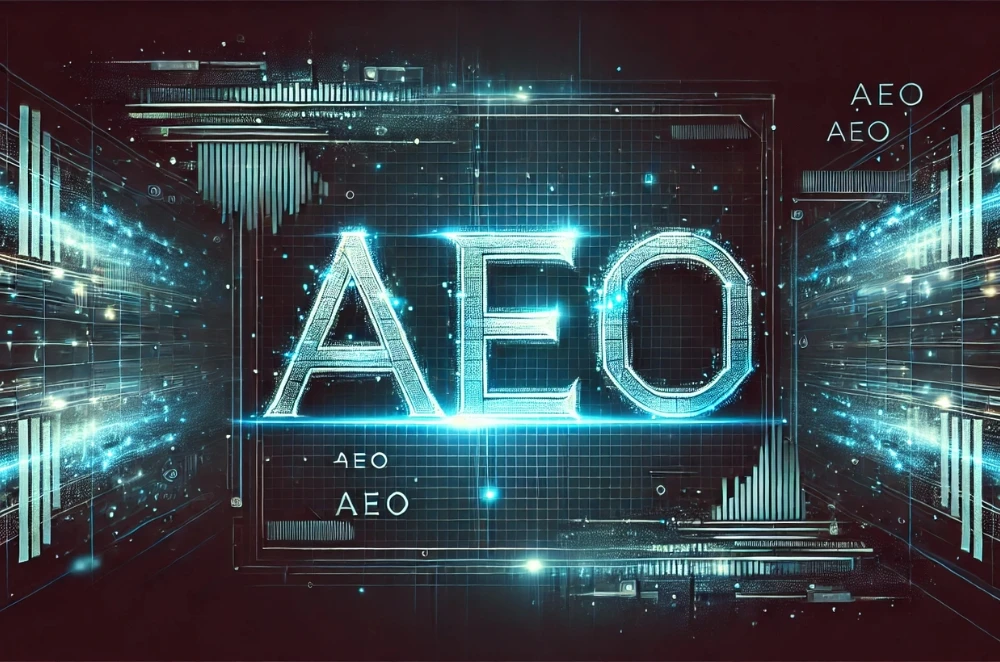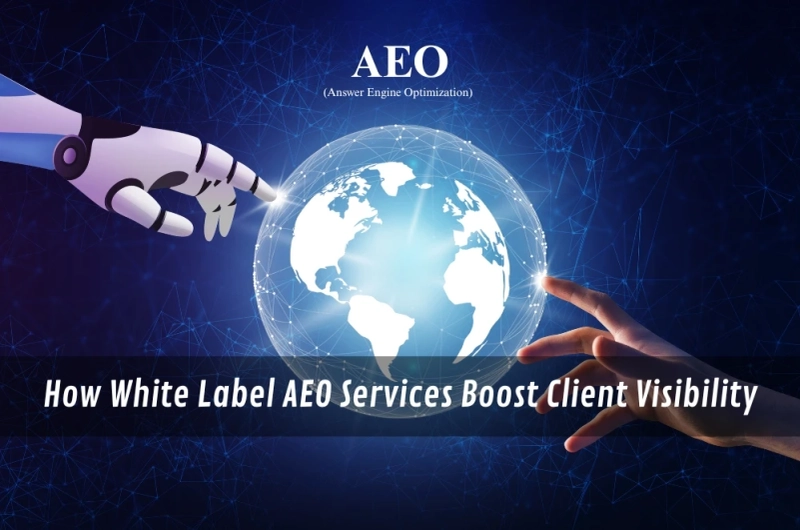If you’ve been in digital marketing for more than five minutes, you’ve probably noticed how quickly things change. One day, it’s all about keywords and backlinks; the next, you’re reading about “answer engine optimization” (AEO) and wondering if this is just another fad. Spoiler alert: it’s not.
AEO is about getting your content in front of people before they even click on a website — think Google’s AI Overviews, Bing Copilot, or even AI assistants like ChatGPT delivering your answer instantly. For agencies, offering AEO white label services means you can give clients a competitive edge without having to build the whole capability in-house.
Wait, so what exactly is AEO?
AEO is the practice of optimizing content so it appears directly in answer engines — the tools people use to get instant answers without scrolling through ten blue links. It’s not just SEO with a different hat; it’s about structuring your content in a way that AI and search bots can quickly understand and present.
It’s things like:
- Writing clear, concise, and direct answers to common questions.
- Using schema and structured data to mark up content.
- Making sure your brand appears in trusted, high-authority sources that search engines like to pull from.
If you’re thinking, “That sounds like more work on top of SEO,” you’d be right, which is why white label solutions have popped up — so agencies can outsource it while still offering it under their own brand.
Why agencies are paying attention
Here’s the thing: answer engines aren’t going away. In fact, they’re getting more influential every month. That means your clients’ potential customers could be finding answers from someone else — even if you’ve been working on their SEO for years.
AEO ensures your client’s voice is the one that gets heard first. And by partnering with a white label provider, you get:
- Immediate expertise — no need to retrain your whole team.
- Scalable delivery — onboard more clients without burning out your staff.
- Faster results — because the systems, templates, and processes are already set up.
The crossover with SEO and digital marketing
You can’t really talk about AEO without touching on broader digital strategy. SEO still matters — you’re still optimizing for search engines — but the goalposts have moved.
The Australian Government’s guide on digital marketing for small businesses is a good reminder that your online presence is multi-channel. AEO is simply the next channel to master. It fits alongside:
- Search engine optimization
- Content marketing
- Social media
- Email nurturing
For agencies, adding AEO is like adding another tool in the kit — and it’s one clients are starting to ask about.
How white label AEO works in practice
When you bring in a white label provider, they handle the behind-the-scenes grunt work:
- Content audits to see where your client’s answers already rank (or don’t).
- Keyword + query mapping based on the kinds of questions that answer engines are showing.
- Content structuring so answers are concise, clear, and formatted for featured snippets or AI summaries.
- Schema markup to help search bots understand the context.
You get the finished product branded under your agency, ready to present to the client as if it came from your own team.
Why AEO can feel like “starting over”
I’ll be honest: for many marketers, moving into AEO feels like going back to the drawing board. I had a client last year who was ranking brilliantly for blog content. But when we tested their visibility in AI Overviews, almost none of their content was showing up. We had to restructure key pages, rewrite intros, and add clear Q&A sections.
The payoff? Within three months, they were showing up in answer engine results for three of their biggest money-making queries. And here’s the kicker — those spots aren’t always as competitive as traditional SERPs right now. It’s a window of opportunity.
When to recommend AEO to a client
Not every business needs to dive in headfirst. I’ve found AEO is worth pushing when:
- The client’s industry gets lots of “how-to” or FAQ searches.
- They’re already investing in SEO and content.
- They want to be seen as a thought leader.
- They’re frustrated by high bounce rates from traditional search.
It’s also worth noting that AEO doesn’t replace SEO — it complements it. Think of SEO as building the house, and AEO as making sure it shows up in the real estate brochure before anyone even searches the street.
Building a long-term AEO strategy
If you’re going to offer this, do it properly. That means thinking beyond “a few optimized pages” and building a process that can be repeated. That might look like:
- Monthly content audits for new opportunities.
- Updating existing content to match emerging queries.
- Cross-linking AEO content with other assets — for example, linking a high-performing snippet answer to a deeper resource.
An internal answer engine content strategy is worth developing so your whole team knows the playbook.
Future-proofing with white label partners
AEO is going to evolve fast. What works today might need tweaking in six months. The benefit of having a white label partner is they’re already testing, iterating, and refining the approach — you just get the distilled version.
I’ve seen agencies go from “never heard of AEO” to offering it to every new client in under a quarter, purely because they had the right partner. And the best part? They could focus on client relationships and creative work, rather than decoding Google’s latest changes.
For more insight into what’s coming, keep an eye on resources like the future of answer engine optimization, these are the folks tracking the trends before they hit the mainstream.
Wrapping it up
AEO isn’t a magic bullet, but for agencies, it’s a serious opportunity — especially if you’re willing to be early to the game. The agencies that master it now will be the ones setting the standard when clients start asking, “Why aren’t we showing up in AI answers?”
If you don’t have the resources to build it in-house, white label is your shortcut. You get the results, your clients get the visibility, and everyone wins.


